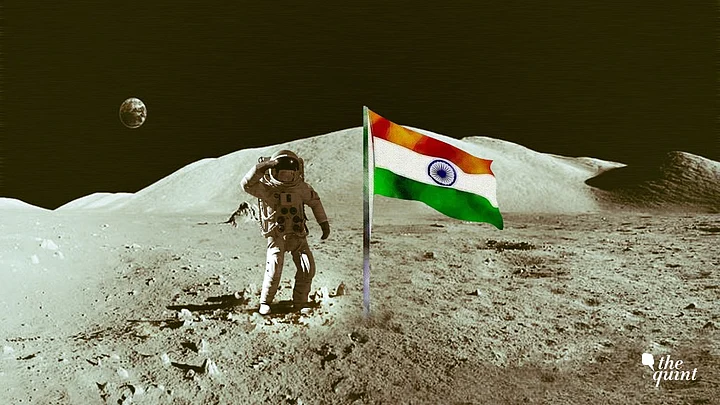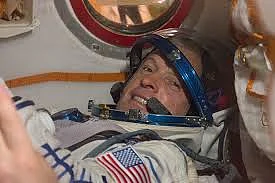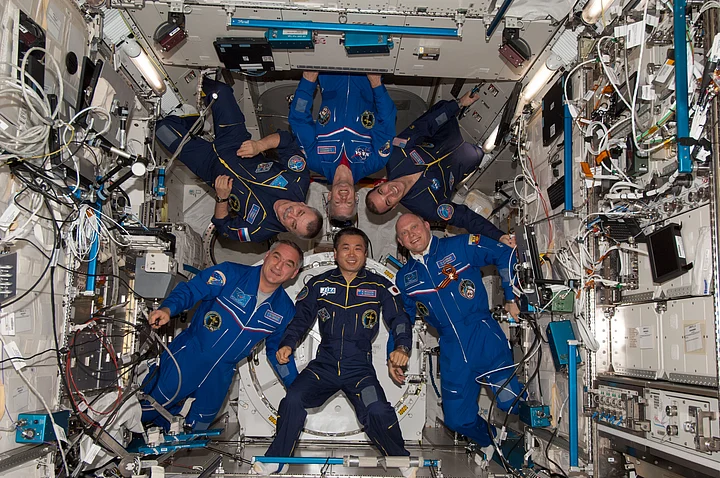A timer has been set and the clock is ticking. Since Prime Minister Narendra Modi announced on the occasion of 72nd Independence Day, that an Indian astronaut, be it a man or a woman, will go on a space odyssey by 2022 on board the ‘Gaganyaan’, everyone is curious how will India accomplish this feat.
The mission was back in news on Friday, 28 December, when the Cabinet approved the programme with a budget of around Rs 10,000 crore to send a three-member team into space for at least seven days. Union Minister Ravi Shankar Prasad said, “a three-member team will be sent to the Earth’s lower orbit for at least seven days.”
The preparations imperative for such a manned mission – way more complex than unmanned missions that India has already successfully carried out (Chandrayaan and Mangalyaan) – are not just related to designing and building the spacecraft, but also grueling training which the selected astronauts will undertake.
So here’s a lowdown on the challenges the selected astronauts and ISRO will have to tackle and the groundwork that has already been laid.
What Would it Take to Become the Astronaut Aboard Gaganyaan 2022?
1. Several Years of Grueling Preparations
To get a sense of what it would take to travel into space and how long the training process will continue – we spoke to two experts in the field – retired NASA astronaut Steve Swanson and retired Air Commodore Ravish Malhotra, who served as the backup cosmonaut for Rakesh Sharma, the only Indian to travel in space.
Calling the training process for an astronaut a long one, former NASA astronaut Steve Swanson – who has to his credit almost 200 days in space and over 26 hours worth of spacewalks – told The Quint that two basic requirements for the job are a “background in engineering or science”, along with some amount of “experience in an operational environment”, like being a pilot or a scientist in a remote environment.
“…once they are selected as an astronaut, the specific training on how the spacecraft [operates] begins, along with training on how to perform rendezvous (flying one vehicle to another and docking while in orbit), and how to do spacewalks. This usually lasts about two years, but can depend upon the complexity of the spacecraft and what other tasks are required.”
Steve Swanson, retired NASA astronaut, to The QuintFollowing this, training for the specific flight in question starts, which, Swanson said, can take another one to two years depending on what exactly the mission is. Understanding the exact profiles of the mission, working with people on the ground at the flight control centre, and training for many off-nominal situations including emergencies, are all part of this stage of the preparations.
"One issue we have is that there is no good way to train how to work and live in the microgravity environment (floating). So, we try to always have a flown crew member fly with a rookie crew member to help them adjust quickly and efficiently to this new environment. Although this is not necessary, it is very highly desired," Swanson said.
Concurring with Swanson, retired Air Commodore Ravish Malhotra pointed out the need for astronauts to undergo both theoretical and practical training rigorously, along with a thorough familiarity with systems on board the spacecraft.
Saying the training will take around two years, Malhotra recounted his own experience:
“During our training, we were imparted zero gravity training in an aircraft specifically modified for the purpose. By doing an over-the top manoeuvre, a period of zero gravity was achieved for about 35 seconds.”
Ravish Malhotra to The QuintThe three-member crew for the Gaganyaan mission is expected to be selected from a group of 30 candidates.
Expand2. The Costs
The earmarking of Rs 10,000 crore for the Gaganyaan programme has been welcomed by ISRO chairperson K Sivan who told The Times of India that the money would be used for a "lot of new testing and development". A significant chunk of the funds would be devoted to ensure that the mission gets a human-rating certification, which means the spacecraft and the launch vehicle are certified to safely transport humans.
Sharing ISRO's roadmap for the mission, Sivan told TOI:
“We have to build three sets of rockets, crew and service module. Although I don’t have the exact break-up of figures at this moment, building three GSLV-MK III (the launch vehicle suited for a manned mission) and other modules and conducting various human-rating tests will definitely use about 50 percent of the budget.”
K Sivan, ISRO chairperson, to The Times of IndiaAs for astronaut selection, training and setting up of facilities, around 10 percent of the budget would be used, Sivan reportedly said.
Before the mission takes place in December 2021 or early 2022, there will be unmanned missions that will be carried out in 2020 and 2021.
The space agency has already invested Rs 173 crore into technologies needed for a manned space mission, according to NDTV.
Expand3. Would The Mission be Completely Indigenous?
In November, ISRO chairperson K Sivan had conveyed the intention of the agency to make the Gaganyaan mission "more and more indigenous" saying, "We want to make use of maximum facilities available in India". But he did say that some testing will be undertaken abroad.
The country has reportedly enlisted the help of Russia and France for the manned space mission by signing some agreements.
Expand4. The Million Dollar Question – Is 2022 a Realistic Deadline?
The Indian Space Research Organisation (ISRO) has been developing and testing several technologies required specifically for the manned space mission, as this Indian Express article pointed out.
In fact, such a mission has been under discussion since 2004. In December 2014, ISRO successfully tested an experimental flight of the GSLV Mk-III (or LVM-3), the launch vehicle suited for a manned mission, along with an experimental crew module. This was followed by the LVM-3’s first ‘development flight’ in June 2017, and later by the successful testing of the crew escape system in July 2018.
However, many more tests along with technological advancements will pave the way for this mission to kick off. Underlining the difficulties involved in the whole process, Steve Swanson narrated the effort it took for SpaceX to shift from an unmanned to a manned mission:
“… SpaceX developed a cargo vehicle for the International Space Station (ISS) and it flew its first mission in 2012. Very soon after, they started work on a human-rated version of that vehicle and rocket to take astronauts to the ISS. We are hoping this will happen next year (2019), which is seven years later.”
Steve SwansonAnd as for getting an Indian astronaut ready to be in space by 2022, Ravish Malhotra had pointed out “it certainly would be a very tight schedule in case the astronauts need to be trained at our own facility.”
“The facility needs to be set up, training procedures need to be finalised and last but not the least, candidate selection requires to be done,” he had said.
All-in-all, the next three years will be tough for the ISRO.
(Note: This story was first published on 29 August 2018 and has been updated keeping in mind the Cabinet’s approval of the Gaganyaan programme with a budget of around Rs 10,000 crore.)
(At The Quint, we question everything. Play an active role in shaping our journalism by becoming a member today.)
Expand
Several Years of Grueling Preparations
To get a sense of what it would take to travel into space and how long the training process will continue – we spoke to two experts in the field – retired NASA astronaut Steve Swanson and retired Air Commodore Ravish Malhotra, who served as the backup cosmonaut for Rakesh Sharma, the only Indian to travel in space.
Calling the training process for an astronaut a long one, former NASA astronaut Steve Swanson – who has to his credit almost 200 days in space and over 26 hours worth of spacewalks – told The Quint that two basic requirements for the job are a “background in engineering or science”, along with some amount of “experience in an operational environment”, like being a pilot or a scientist in a remote environment.
“…once they are selected as an astronaut, the specific training on how the spacecraft [operates] begins, along with training on how to perform rendezvous (flying one vehicle to another and docking while in orbit), and how to do spacewalks. This usually lasts about two years, but can depend upon the complexity of the spacecraft and what other tasks are required.”Steve Swanson, retired NASA astronaut, to The Quint
Following this, training for the specific flight in question starts, which, Swanson said, can take another one to two years depending on what exactly the mission is. Understanding the exact profiles of the mission, working with people on the ground at the flight control centre, and training for many off-nominal situations including emergencies, are all part of this stage of the preparations.
"One issue we have is that there is no good way to train how to work and live in the microgravity environment (floating). So, we try to always have a flown crew member fly with a rookie crew member to help them adjust quickly and efficiently to this new environment. Although this is not necessary, it is very highly desired," Swanson said.
Concurring with Swanson, retired Air Commodore Ravish Malhotra pointed out the need for astronauts to undergo both theoretical and practical training rigorously, along with a thorough familiarity with systems on board the spacecraft.
Saying the training will take around two years, Malhotra recounted his own experience:
“During our training, we were imparted zero gravity training in an aircraft specifically modified for the purpose. By doing an over-the top manoeuvre, a period of zero gravity was achieved for about 35 seconds.”Ravish Malhotra to The Quint
The three-member crew for the Gaganyaan mission is expected to be selected from a group of 30 candidates.
The Costs
The earmarking of Rs 10,000 crore for the Gaganyaan programme has been welcomed by ISRO chairperson K Sivan who told The Times of India that the money would be used for a "lot of new testing and development". A significant chunk of the funds would be devoted to ensure that the mission gets a human-rating certification, which means the spacecraft and the launch vehicle are certified to safely transport humans.
Sharing ISRO's roadmap for the mission, Sivan told TOI:
“We have to build three sets of rockets, crew and service module. Although I don’t have the exact break-up of figures at this moment, building three GSLV-MK III (the launch vehicle suited for a manned mission) and other modules and conducting various human-rating tests will definitely use about 50 percent of the budget.”K Sivan, ISRO chairperson, to The Times of India
As for astronaut selection, training and setting up of facilities, around 10 percent of the budget would be used, Sivan reportedly said.
Before the mission takes place in December 2021 or early 2022, there will be unmanned missions that will be carried out in 2020 and 2021.
The space agency has already invested Rs 173 crore into technologies needed for a manned space mission, according to NDTV.
Would The Mission be Completely Indigenous?
In November, ISRO chairperson K Sivan had conveyed the intention of the agency to make the Gaganyaan mission "more and more indigenous" saying, "We want to make use of maximum facilities available in India". But he did say that some testing will be undertaken abroad.
The country has reportedly enlisted the help of Russia and France for the manned space mission by signing some agreements.
The Million Dollar Question – Is 2022 a Realistic Deadline?
The Indian Space Research Organisation (ISRO) has been developing and testing several technologies required specifically for the manned space mission, as this Indian Express article pointed out.
In fact, such a mission has been under discussion since 2004. In December 2014, ISRO successfully tested an experimental flight of the GSLV Mk-III (or LVM-3), the launch vehicle suited for a manned mission, along with an experimental crew module. This was followed by the LVM-3’s first ‘development flight’ in June 2017, and later by the successful testing of the crew escape system in July 2018.
However, many more tests along with technological advancements will pave the way for this mission to kick off. Underlining the difficulties involved in the whole process, Steve Swanson narrated the effort it took for SpaceX to shift from an unmanned to a manned mission:
“… SpaceX developed a cargo vehicle for the International Space Station (ISS) and it flew its first mission in 2012. Very soon after, they started work on a human-rated version of that vehicle and rocket to take astronauts to the ISS. We are hoping this will happen next year (2019), which is seven years later.”Steve Swanson
And as for getting an Indian astronaut ready to be in space by 2022, Ravish Malhotra had pointed out “it certainly would be a very tight schedule in case the astronauts need to be trained at our own facility.”
“The facility needs to be set up, training procedures need to be finalised and last but not the least, candidate selection requires to be done,” he had said.
All-in-all, the next three years will be tough for the ISRO.
(Note: This story was first published on 29 August 2018 and has been updated keeping in mind the Cabinet’s approval of the Gaganyaan programme with a budget of around Rs 10,000 crore.)
(At The Quint, we question everything. Play an active role in shaping our journalism by becoming a member today.)



